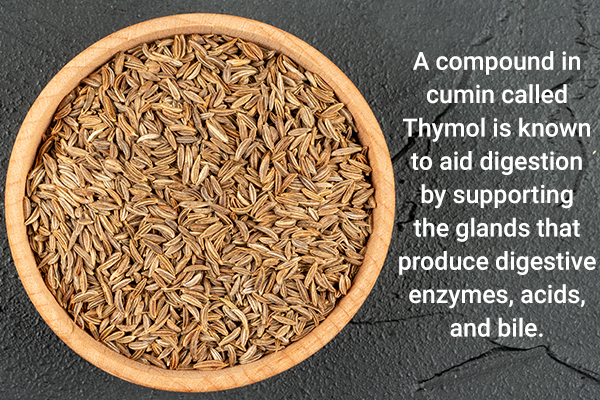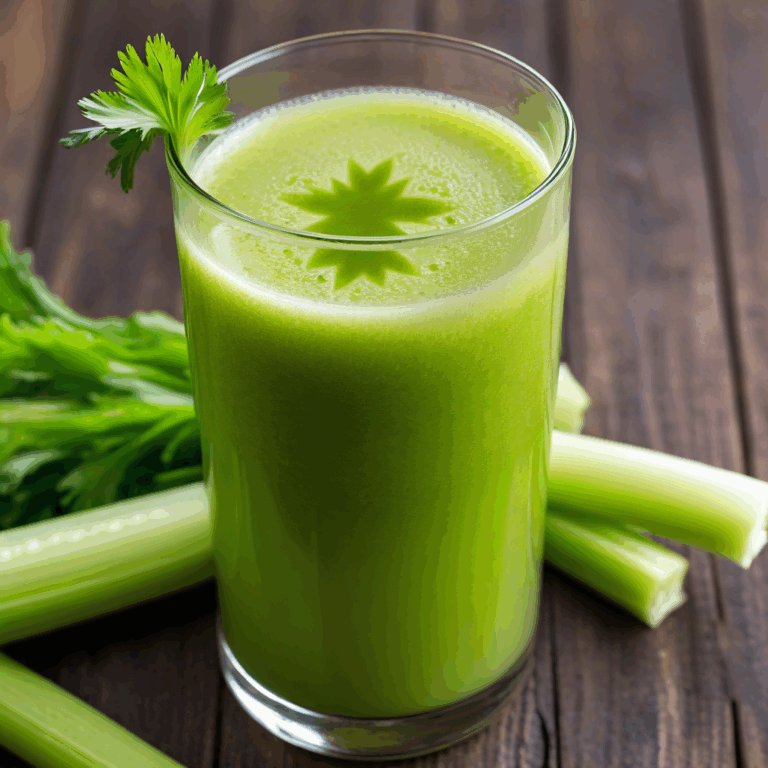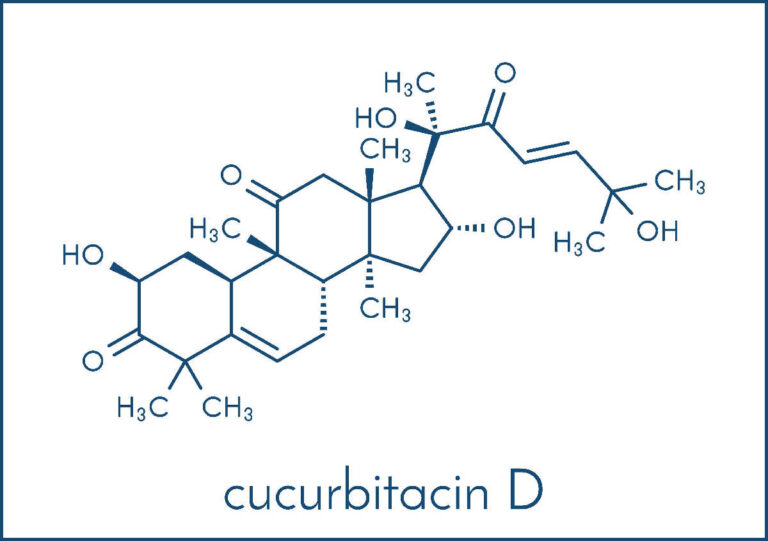Want Better Digestion? Add Cumin to Your Next Meal
A rumbling stomach, a bloated feeling after a seemingly innocent meal, the subtle discomfort that whispers throughout the day – these are all too familiar companions for many navigating the complexities of modern life. In an era defined by speed, stress, and often, processed foods, our digestive systems bear a heavy burden. We seek relief in a myriad of solutions, from over-the-counter remedies to restrictive diets, often overlooking the profound wisdom embedded in ancient culinary traditions and the simple, natural ingredients that have sustained humanity for millennia.
Among these unassuming heroes of the pantry, one spice stands out with a remarkable pedigree and an increasingly robust scientific backing for its digestive prowess: cumin. Far more than just a flavor enhancer, this humble seed holds a treasure trove of compounds designed to soothe, stimulate, and support the intricate dance of digestion. It’s a story of ancient wisdom meeting modern science, a testament to the power of integrating simple, natural remedies into our daily lives.
This isn’t just about adding a pinch of spice; it’s about rediscovering a foundational element of holistic well-being. This article will embark on a journey, tracing cumin’s remarkable path from ancient lands to contemporary kitchens, unraveling the intricate mechanisms behind its digestive magic, and illuminating the myriad ways you can invite this powerful ally into your next meal, transforming not just your food, but potentially your entire digestive experience. For those who are knowledgeable and discerning, eager to understand the ‘why’ behind the ‘what,’ prepare to delve deep into the world of cumin and its profound impact on achieving digestive harmony.
Cumin’s Ancient Pedigree: A Spice Through Time
To truly appreciate the power of cumin, one must first understand its extraordinary journey through history. This isn’t merely a spice; it’s a living artifact, a thread woven through the tapestries of ancient civilizations, culinary evolutions, and traditional medicine systems across continents. Its story begins not in a modern spice rack, but in the sun-drenched lands of the Middle East, North Africa, and India, where its cultivation dates back over 5,000 years.
Imagine the bustling markets of ancient Egypt, where cumin wasn’t just a culinary delight but a vital component in rituals and remedies. The Egyptians, renowned for their advanced understanding of botany and medicine, utilized cumin not only to flavor their breads and stews but also as a key ingredient in their embalming processes, believing in its preservative and purifying qualities. Its presence in pharaonic tombs speaks volumes of its revered status.
From the banks of the Nile, cumin’s aromatic tendrils stretched across the Mediterranean. The ancient Greeks and Romans embraced it with equal fervor. In Greece, it was a common table spice, much like salt and pepper today, often presented in its own container at dining tables. The Roman scholar Pliny the Elder wrote extensively about its medicinal properties, particularly its use as a remedy for indigestion and flatulence – a testament to its long-recognized digestive benefits. It was also considered a symbol of generosity and hospitality, often given as a gift. Roman soldiers even carried cumin seeds, believing they offered strength and protection.
As empires rose and fell, cumin continued its global expansion, carried by traders along the legendary Silk Road. It found a welcoming home in medieval Europe, where its pungent, earthy notes added depth to bland diets and its perceived medicinal benefits were highly valued. Monasteries cultivated it in their herb gardens, and apothecaries prescribed it for a range of ailments, from colic to poor digestion, solidifying its reputation as a reliable digestive aid long before the advent of modern pharmacology.
However, it is perhaps in the culinary and medicinal traditions of India and the Middle East that cumin truly blossomed into its full expression. In Ayurveda, the ancient Indian system of medicine, cumin (known as Jeera) is revered for its ability to ignite "Agni," the digestive fire, and balance the body’s doshas. It’s prescribed for bloating, gas, indigestion, and even to support detoxification. Similarly, in Traditional Chinese Medicine (TCM) and Unani medicine, cumin is employed to warm the stomach, dispel cold, and regulate qi (life force), particularly in relation to digestive complaints. Its warming properties were thought to counter the "coldness" that often manifested as digestive sluggishness.
This rich historical tapestry reveals a consistent narrative: across diverse cultures and millennia, cumin has been more than just a seasoning. It has been a trusted companion in the human quest for well-being, particularly digestive harmony. Its enduring presence in our pantries is not merely a matter of taste but a living legacy of its profound and multifaceted benefits, a legacy that modern science is now enthusiastically unpacking.
The Science Unveiled: How Cumin Works Its Magic
The journey from ancient wisdom to modern scientific understanding is one of fascinating discovery. While our ancestors instinctively recognized cumin’s benefits, modern research allows us to peer into the microscopic world of its active compounds, unraveling the precise mechanisms by which this unassuming seed orchestrates its digestive symphony. It’s a testament to the fact that many "old wives’ tales" often contain kernels of profound truth.
At the heart of cumin’s therapeutic power lies a complex interplay of bioactive compounds, primarily its volatile essential oils. The most prominent of these is cuminaldehyde, which gives cumin its distinctive aroma and much of its biological activity. But it’s not alone; terpenes like gamma-terpinene and beta-pinene, along with a host of flavonoids and phenolic compounds, all contribute to its profound effects.
Let’s dissect the science behind cumin’s digestive prowess:
-
Stimulation of Digestive Enzymes: This is perhaps one of cumin’s most celebrated digestive actions. Cuminaldehyde, along with other constituents, is believed to stimulate the secretion of pancreatic enzymes. The pancreas is a vital organ responsible for producing enzymes such as amylase (for carbohydrates), lipase (for fats), and proteases (for proteins). By enhancing the release of these enzymes, cumin effectively primes the digestive system to break down food more efficiently into absorbable nutrients. Imagine your digestive system as a factory; cumin helps ensure the machinery (enzymes) is running at optimal capacity, preventing bottlenecks and incomplete processing.
-
Increased Bile Secretion: Beyond pancreatic enzymes, cumin has been shown to encourage the liver to produce more bile and the gallbladder to release it. Bile is critical for the emulsification of fats in the small intestine. Without adequate bile, fats are poorly digested, leading to malabsorption of fat-soluble vitamins and potential digestive discomfort like steatorrhea (fatty stools). By enhancing bile flow, cumin aids in the breakdown and absorption of dietary fats, reducing the burden on the digestive system and improving nutrient assimilation.
-
Carminative Properties: Dispelling Gas and Bloating: This is where many individuals first experience cumin’s immediate relief. The term "carminative" refers to substances that help prevent the formation of gas or aid in its expulsion. Cumin achieves this primarily through its ability to relax the smooth muscles of the gastrointestinal tract. When these muscles are tense or spastic, gas can become trapped, leading to bloating, cramping, and discomfort. Cumin’s antispasmodic action allows the muscles to relax, facilitating the release of trapped gas and reducing the sensation of fullness and distension. This effect is largely attributed to the volatile oils, which act on specific receptors in the gut wall.
-
Antioxidant Power: Protecting the Gut Lining: The digestive tract is constantly exposed to various stressors, including free radicals generated during metabolism and from environmental toxins. Oxidative stress can damage the delicate cells lining the gut, leading to inflammation and impaired function. Cumin is rich in antioxidants, including flavonoids and phenolic compounds, which scavenge these harmful free radicals. By neutralizing oxidative stress, cumin helps protect the integrity of the gut lining, fostering a healthier environment for digestion and nutrient absorption. This protective effect is crucial for long-term digestive health.
-
Anti-inflammatory Effects: Soothing an Irritated Gut: Inflammation is a common underlying factor in many digestive disorders, from irritable bowel syndrome (IBS) to more serious conditions. Research suggests that compounds in cumin possess significant anti-inflammatory properties. They can modulate various inflammatory pathways in the body, helping to reduce swelling and irritation in the gut. For individuals suffering from conditions characterized by gut inflammation, incorporating cumin can offer a gentle, natural way to soothe discomfort and promote healing without the harsh side effects often associated with synthetic anti-inflammatories.
-
Antimicrobial Activity: Modulating the Gut Microbiota: The gut is home to trillions of microorganisms, a delicate ecosystem known as the gut microbiota. An imbalance in this ecosystem (dysbiosis) can profoundly impact digestion and overall health. Cumin has demonstrated antimicrobial properties against certain pathogenic bacteria, including some foodborne pathogens and even Helicobacter pylori, a bacterium implicated in ulcers and gastritis. While it doesn’t act as a broad-spectrum antibiotic, its selective antimicrobial action may help to restore a healthier balance within the gut flora, suppressing harmful species while potentially supporting beneficial ones. This modulation contributes to a more efficient and less symptomatic digestive process.
-
Motility Regulation: A well-functioning digestive system relies on coordinated muscle contractions (peristalsis) to move food through the GI tract. Both excessively fast (diarrhea) and excessively slow (constipation) motility can cause distress. While more research is needed, some traditional uses and preliminary studies suggest cumin may help normalize gut motility, preventing extremes. Its antispasmodic effects can relax overactive muscles, while its stimulating properties might gently encourage sluggish movement, fostering a more balanced rhythm.
In essence, cumin acts as a comprehensive digestive aid, addressing multiple facets of the process. It’s not just a band-aid; it’s a supportive ally that optimizes the very machinery of digestion, reducing discomfort, enhancing nutrient uptake, and protecting the delicate ecosystem of the gut. The ancient wisdom that heralded cumin as a digestive powerhouse now stands validated by the meticulous scrutiny of modern science, making its case stronger than ever.
Beyond Digestion: Cumin’s Broader Health Canvas
While cumin’s role in digestion is undeniably its most celebrated attribute, to limit our understanding to just this aspect would be to overlook the broader tapestry of health benefits it offers. Nature’s remedies, particularly those steeped in ancient traditions, rarely possess a singular virtue; instead, they often offer a holistic spectrum of advantages. Cumin is no exception, extending its benevolent influence across several key physiological systems.
Think of cumin as a multifaceted jewel, each facet reflecting a different aspect of its healing potential, all stemming from its rich composition of antioxidants, anti-inflammatory compounds, and unique volatile oils.
-
Metabolic Health & Blood Sugar Regulation: In a world grappling with rising rates of metabolic disorders, cumin emerges as a promising natural adjunct. Several studies have explored its potential impact on blood sugar levels. It’s believed that compounds in cumin may enhance insulin sensitivity, allowing cells to more effectively utilize glucose from the bloodstream, thereby helping to stabilize blood sugar. This effect is particularly intriguing for individuals managing pre-diabetes or type 2 diabetes, offering a natural dietary component that contributes to metabolic balance. While not a replacement for medication, its consistent inclusion in the diet could be a supportive measure.
-
Cholesterol Management: The health of our cardiovascular system is intrinsically linked to our dietary choices. Cumin has shown potential in influencing lipid profiles, specifically in helping to lower levels of "bad" LDL cholesterol and triglycerides, while potentially increasing "good" HDL cholesterol. These effects are attributed to its antioxidant and anti-inflammatory properties, which can protect against arterial damage, and possibly to its influence on fat metabolism and bile acid secretion, which plays a role in cholesterol excretion. Incorporating cumin regularly can therefore be a small but meaningful step towards maintaining a healthier heart.
-
Weight Management Support: While no single spice is a magic bullet for weight loss, cumin can play a supportive role in a comprehensive weight management strategy. Its ability to boost metabolism, improve digestion, and potentially aid in fat burning (as suggested by some studies on cumin powder or cumin water) makes it an interesting addition. By optimizing the body’s ability to process food and utilize energy, cumin can contribute to a more efficient metabolic state, which is foundational for healthy weight management.
-
Immune System Enhancement: The gut is often referred to as the "second brain" and a major hub of immune activity. By fostering a healthy digestive system, reducing inflammation, and providing a powerful dose of antioxidants, cumin indirectly strengthens the immune system. Its antimicrobial properties also offer a direct line of defense against pathogens. A body free from excessive oxidative stress and chronic inflammation is better equipped to mount an effective immune response, protecting against illness and promoting overall resilience.
-
Cognitive Function & Neuroprotection: The brain, like all organs, is vulnerable to oxidative stress and inflammation. Cumin’s potent antioxidant compounds can cross the blood-brain barrier, offering protection against free radical damage that contributes to neurodegenerative processes. While research in this area is still emerging, the general principle that antioxidants support brain health suggests that cumin, as a rich source, could contribute to long-term cognitive well-being.
-
Anticancer Potential: Preliminary research, primarily in laboratory and animal studies, has hinted at cumin’s potential chemopreventive properties. Certain compounds in cumin, such as cuminaldehyde and thymoquinone (found in black cumin seed oil, a related but distinct spice), have demonstrated the ability to inhibit the proliferation of cancer cells and induce apoptosis (programmed cell death) in various cancer lines. While these findings are exciting, it’s crucial to remember that this area requires extensive human clinical trials before any definitive conclusions can be drawn. Nevertheless, it underscores the profound pharmacological potential of this humble seed.
By understanding these broader benefits, we elevate cumin from a mere digestive aid to a true "super-spice" – a natural ingredient that nurtures the body on multiple fronts. Its holistic impact reminds us that food is medicine, and that integrating such powerful, natural components into our diet is a proactive step towards comprehensive health and vitality.
Integrating Cumin into Your Culinary Life: Practical Applications
Armed with a deeper understanding of cumin’s ancient lineage and scientific prowess, the natural next question is: how do we effectively invite this powerhouse into our daily culinary repertoire? The good news is that cumin is remarkably versatile, lending itself to a vast array of dishes and preparation methods. Integrating it isn’t just about boosting your health; it’s about elevating your cooking with its distinctive, warm, earthy, and slightly pungent flavor profile.
Forms of Cumin and How to Use Them:
-
Whole Cumin Seeds: These are the most potent form, holding all their volatile oils until crushed or ground.
- Toasting: This is a game-changer. Lightly toasting whole cumin seeds in a dry pan until fragrant (a minute or two) deepens their flavor and aroma significantly. They can then be ground or used whole.
- Blooming in Oil: A cornerstone of Indian and Middle Eastern cooking. Sautéing whole cumin seeds in a little oil or ghee at the beginning of a dish (e.g., curries, stews, dal) allows their flavor compounds to infuse the fat, creating a fragrant base for the entire meal.
- Pickling & Preserving: Adds a unique flavor to pickles and fermented vegetables.
-
Ground Cumin Powder: This is the most convenient form for everyday use.
- Direct Addition: Can be added directly to dishes during cooking, marinades, rubs, or even as a finishing spice.
- Blending: Great for spice blends like garam masala, curry powder, or chili powder.
- Roasting Vegetables: Tossed with olive oil and other spices, ground cumin imparts a delicious, savory depth to roasted root vegetables, cauliflower, or broccoli.
-
Roasted Cumin Powder (Bhuna Jeera): A specific preparation, often found in Indian cuisine, where whole seeds are roasted until dark and then ground. It has a deeper, smokier, nuttier flavor profile compared to raw ground cumin.
- Finishing Spice: Excellent sprinkled over yogurt, raita, chaats, or soups.
- Cooling Dishes: Paradoxically, despite its "warming" properties, roasted cumin powder is often used in cooling drinks and salads in Indian cuisine.
-
Cumin Water (Jeera Water) / Cumin Tea: A simple yet potent digestive tonic.
- Preparation: Soak a teaspoon of whole cumin seeds in a glass of water overnight, or boil a teaspoon of seeds in water for 5-10 minutes, then strain.
- Consumption: Drink warm or at room temperature, ideally first thing in the morning or after meals. This is an excellent way to harness cumin’s digestive benefits directly and consistently.
Culinary Versatility: Where Cumin Shines:
- Indian Cuisine: The undisputed king. Cumin is fundamental to almost every savory Indian dish, from curries and dals to rice preparations (jeera rice) and vegetable stir-fries.
- Mexican & Tex-Mex: Essential for chili, tacos, enchiladas, burritos, and many bean dishes.
- Middle Eastern & North African: Features prominently in tagines, couscous, hummus, falafel, and various meat and vegetable stews.
- Mediterranean: Found in some Greek and Turkish dishes, particularly lamb and vegetable preparations.
- Soups & Stews: Adds incredible depth to lentil soup, black bean soup, vegetable stews, and hearty meat stews.
- Marinades & Rubs: A fantastic component for rubs for chicken, lamb, beef, or fish, imparting a savory, earthy crust.
- Roasted Vegetables: As mentioned, a sprinkle of ground cumin transforms humble vegetables into flavor bombs.
- Salad Dressings: A touch of ground cumin can add an unexpected layer of flavor to vinaigrettes.
- Dairy & Yogurt: Roasted cumin powder is a classic pairing with yogurt-based dishes like raita or simply plain yogurt.
- Breads: Some traditional breads, like certain flatbreads, incorporate cumin seeds for flavor.
Tips for Maximizing Benefits:
- Start with Quality: Always choose fresh, organic cumin seeds or powder from a reputable source. Old, stale spices lose their potency and flavor.
- Toast Whole Seeds: For an explosion of flavor and aroma, take the extra minute to toast whole seeds before grinding or adding them to a dish. This "wakes up" the volatile oils.
- Consistency is Key: Like any natural remedy, the benefits of cumin are often cumulative. Incorporating it regularly into your diet, even in small amounts, will yield better results than sporadic large doses.
- Listen to Your Palate: While its benefits are clear, individual taste preferences vary. Experiment with amounts to find what works best for you and your family.
- Pair Wisely: Cumin pairs well with a host of other digestive-friendly spices like coriander, ginger, turmeric, and fennel.
By embracing cumin in your kitchen, you’re not just adding a spice; you’re adding a layer of health, history, and profound flavor to your meals. It’s a simple, delicious, and effective way to proactively support your digestive system and elevate your culinary creations, transforming every meal into an opportunity for greater well-being.
Considerations and Best Practices
While cumin is celebrated for its safety and efficacy as a culinary and medicinal spice, particularly for a knowledgeable audience, it’s important to approach its integration with an understanding of best practices and potential considerations. Like any potent natural ingredient, mindful use enhances its benefits and minimizes any unlikely downsides.
1. Quality Over Quantity:
The efficacy of cumin largely depends on its quality. Opt for organic, whole cumin seeds whenever possible, as they retain their volatile oils and freshness longer than pre-ground powder. Purchase from reputable sources that have good turnover to ensure freshness. Store whole seeds and ground powder in airtight containers away from direct sunlight, heat, and moisture to preserve their potency and flavor. Whole seeds can last up to 3-4 years, while ground cumin is best used within 6 months to a year.
2. Dosage in Culinary Use:
For general culinary purposes, there isn’t a strict "dosage." The amounts typically used in cooking (a teaspoon or two per dish) are well within safe limits and provide sufficient bioactive compounds to exert their digestive benefits. The beauty of spices is that their therapeutic effects often come bundled with their flavor, making it easy to incorporate them naturally.
3. Therapeutic vs. Culinary Doses:
While this article focuses on culinary integration, it’s worth noting that therapeutic doses (e.g., for specific conditions) would typically be higher than those used in daily cooking. If considering high-dose cumin supplements or extracts for targeted health issues, it is imperative to consult with a qualified healthcare professional. This ensures appropriate dosage, monitors for potential interactions, and confirms it aligns with your individual health profile.
4. Potential Side Effects (Generally Mild and Rare):
Cumin is overwhelmingly safe for most people when consumed in culinary amounts. However, in very high, concentrated doses (far exceeding typical food use), some individuals might experience:
- Heartburn or Acid Reflux: Due to its warming nature, excessive amounts could theoretically exacerbate acid reflux in sensitive individuals.
- Light Sensitivity: There are anecdotal reports, though not widely scientifically supported for culinary doses, that very high consumption of cumin might increase photosensitivity.
- Lowered Blood Sugar: While beneficial for many, individuals on blood sugar-lowering medications should monitor their glucose levels closely if significantly increasing cumin intake, as it could potentially augment the effects of their medication.
- Blood Thinning Effects: Again, primarily at very high, concentrated doses, some compounds in cumin might theoretically have mild anti-platelet effects. Individuals on anticoagulant medications (blood thinners) should exercise caution and consult their doctor before consuming large therapeutic amounts.
5. Pregnancy and Breastfeeding:
Cumin is generally considered safe in culinary amounts during pregnancy and breastfeeding. However, as with any herb or spice, high therapeutic doses should be avoided unless specifically advised by a healthcare provider.
6. Listen to Your Body:
Individual responses to foods and spices can vary. Pay attention to how your body reacts to cumin. If you notice any discomfort, simply reduce the amount or discontinue use. Digestive health is a deeply personal journey, and self-awareness is your most valuable tool.
7. Synergy with Other Ingredients:
Cumin often works synergistically with other digestive-friendly spices like fennel, ginger, turmeric, and coriander. Combining these spices in your cooking not only creates complex flavor profiles but also enhances their collective therapeutic impact, embodying the holistic approach of traditional medicine.
By adhering to these best practices, you can confidently integrate cumin into your diet, leveraging its profound benefits for digestion and overall health while respecting its potency and your body’s unique needs. It’s about cultivating a relationship with this ancient spice – one built on knowledge, respect, and mindful application.
The Cumin Conundrum: A Call to Re-evaluate Our Plates
We began this journey acknowledging the pervasive challenge of digestive discomfort in modern life – a silent epidemic that often leaves us feeling disconnected from our bodies and the natural world. In our quest for quick fixes and complex solutions, we frequently overlook the wisdom embedded in the simplest of ingredients, the very sustenance that has nourished generations. Cumin, in its humble form, presents a powerful counter-narrative to this trend.
Its story is a testament to the enduring power of nature’s pharmacy. From the sun-baked plains where it first took root thousands of years ago, through the bustling markets of ancient empires, across the vast trade routes of history, and into the vibrant kitchens of global cultures, cumin has consistently played a dual role: a cornerstone of flavor and a steadfast ally for digestive well-being. We’ve seen how its rich symphony of bioactive compounds – cuminaldehyde, terpenes, flavonoids – meticulously work to stimulate enzymes, boost bile, quell gas, fight inflammation, and protect our precious gut lining. Beyond digestion, its influence extends to metabolic health, immune support, and even holds whispers of neuroprotection and anticancer potential.
This isn’t merely about adding a new spice to your rack; it’s about a re-evaluation of our approach to health, a gentle reminder that profound healing often lies in the accessible, the ancient, and the art of mindful eating. It’s about recognizing that our daily meals are not just fuel, but opportunities to nourish, balance, and heal.
The "Cumin Conundrum" then, is this: why, with such a potent, accessible, and historically validated remedy at our fingertips, do so many of us still struggle with basic digestive harmony? The answer likely lies in our collective oversight, our tendency to complicate what can be elegantly simple.
So, let this be an invitation, a call to action for the knowledgeable and discerning. Embrace cumin. Experiment with its whole seeds, toasted and fragrant, or its earthy ground powder. Infuse your water with its essence, or let it bloom in oil to form the aromatic soul of your next meal. Let it transform your curries, elevate your tacos, deepen your stews, and soothe your stomach.
Imagine a world where digestive harmony is not a luxury, but a common experience, where the wisdom of ancient spices guides our culinary choices, and where every meal becomes a conscious act of self-care. Cumin, this unassuming seed, offers us a tangible step towards that vision. It’s a flavor of history, a promise of health, and a gentle whisper from the past, reminding us that sometimes, the most powerful solutions are the ones that have been patiently waiting for us all along, nestled in the heart of our kitchen. Add cumin to your next meal, and begin your journey towards a more balanced, comfortable, and vibrant digestive life.







